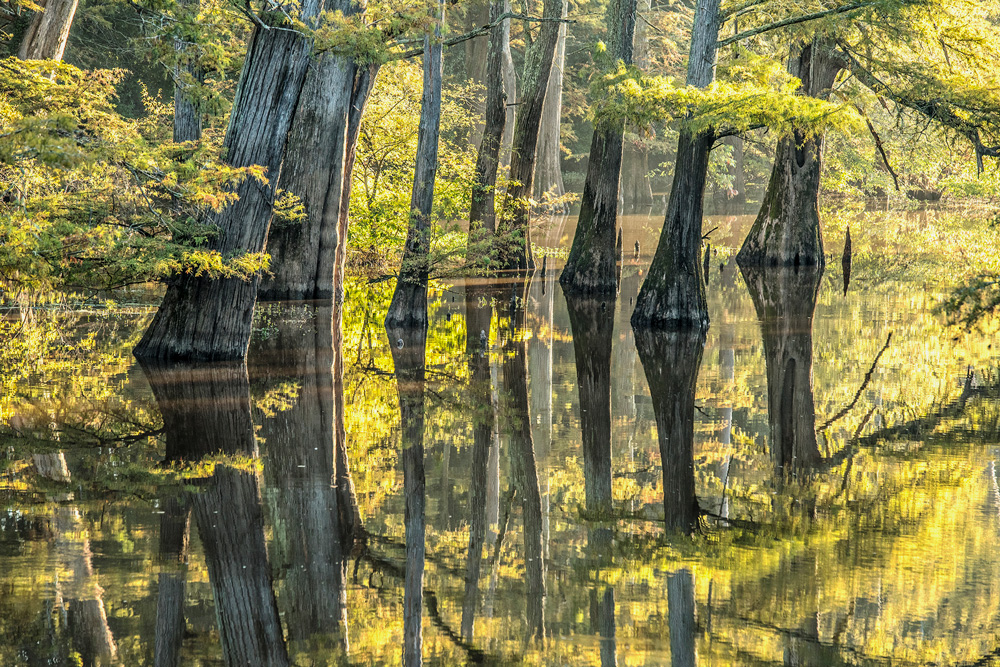The Arkansas Delta, often overlooked for its more mountainous counterparts, offers a unique and tranquil paddling experience. Characterized by its sprawling wetlands, slow-moving rivers, and abundant wildlife, this region is a hidden gem for paddlers seeking solitude and natural beauty.
Where to Paddle
- Bayou Bartholomew Water Trail: This 135-mile waterway meanders through the heart of the Delta, offering opportunities to spot diverse wildlife, including alligators, turtles, and various bird species. The Bayou Bartholomew Water Trail is a paddler’s paradise winding its way through the heart of the Arkansas Delta. As the longest bayou in the world, it offers a unique opportunity to explore the region’s natural beauty. From the tranquil waters to the diverse wildlife, this waterway provides a serene escape. Whether you’re a seasoned paddler or a beginner, the Bayou Bartholomew offers something for everyone. As you glide through the lush greenery and cypress-lined banks, you’ll feel a sense of peace and tranquility that is hard to find in today’s fast-paced world.
- Arkansas Post Water Trail: The Arkansas Post Water Trail offers a unique blend of history and nature. As the site of the first European settlement in the lower Mississippi Valley, paddlers can immerse themselves in rich heritage while enjoying the serene beauty of the Delta. This trail provides opportunities to explore historic landmarks, encounter diverse wildlife, and connect with the region’s past. Whether you’re interested in history, wildlife, or simply a peaceful paddle, the Arkansas Post Water Trail is a must-visit for any outdoor enthusiast.
- Robe Bayou Water Trail: The Robe Bayou Water Trail offers a shorter, yet equally rewarding paddling experience in the Arkansas Delta. This tranquil waterway is perfect for a day trip, allowing visitors to immerse themselves in the natural beauty of the region. While shorter than the Bayou Bartholomew and Arkansas Post trails, Robe Bayou still provides opportunities to spot wildlife and enjoy the peacefulness of the Delta’s waterways. It’s a great choice for those looking for a shorter paddling adventure without sacrificing the charm of the Delta.

What to Expect
Paddling in the Arkansas Delta is a leisurely experience. The gentle currents and calm waters make it suitable for paddlers of all skill levels. You can expect to encounter lush green landscapes, towering cypress trees, and abundant wildlife.
Wildlife Encounters
The Arkansas Delta is a haven for wildlife, offering a diverse array of species in its wetlands and waterways. Birdwatchers will be delighted by the abundance of waterfowl, including majestic bald eagles, graceful herons, and colorful wood ducks. Along the banks, keep an eye out for elusive deer and playful otters. The slow-moving waters are teeming with life, from vibrant fish species to fascinating reptiles like turtles and the occasional alligator.

For those who enjoy observing wildlife from a distance, the Delta’s quiet waters provide ample opportunities for peaceful encounters. As you paddle through the lush greenery, you might be lucky enough to spot a family of beavers hard at work, a curious raccoon exploring the shoreline, or a shy mink darting through the undergrowth. The Delta’s ecosystem is a delicate balance, and preserving its natural inhabitants is essential for maintaining this unique and captivating environment.
Tips for Your Paddle
- Choose the right equipment: A stable kayak or canoe is ideal for the calm waters of the Delta.
- Pack accordingly: Bring plenty of water, sunscreen, insect repellent, and a hat.
- Respect the environment: Leave no trace and avoid disturbing wildlife.
- Check weather conditions: Be aware of potential thunderstorms and wind conditions.
Whether you’re a seasoned paddler or a beginner, the Arkansas Delta offers a unique and rewarding experience. So, grab your paddle and embark on a journey through this enchanting region.
For more information on Arkansas Water Trails visit the Arkansas Game and Fish Commission website.

(All photos courtesy of the Arkansas Department of Parks, Heritage and Tourism.)






